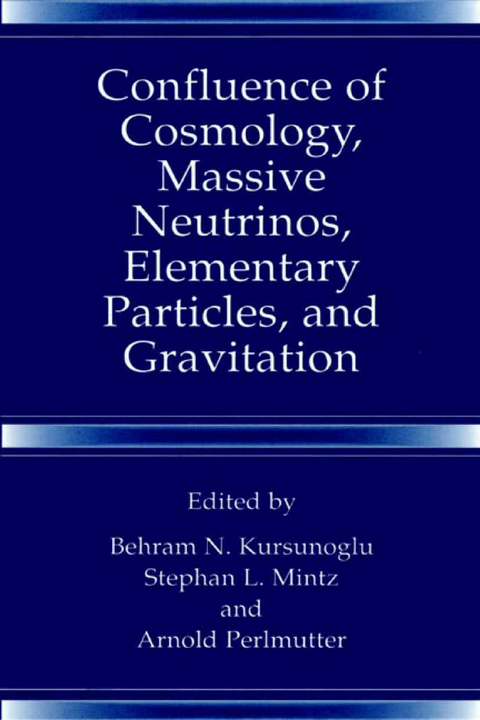
Confluence of Cosmology, Massive Neutrinos, Elementary Particles, and Gravitation
Kluwer Academic/Plenum Publishers (Verlag)
978-0-306-46208-5 (ISBN)
- Titel z.Zt. nicht lieferbar
- Versandkostenfrei innerhalb Deutschlands
- Auch auf Rechnung
- Verfügbarkeit in der Filiale vor Ort prüfen
- Artikel merken
Justbefore the preliminary programof Orbis Scientiae 1998 went to press the news in physics was suddenly dominated by the discovery that neutrinos are, after all, massive particles. This was predicted by some physicists including Dr. Behram Kusunoglu, who had apaper published on this subject in 1976 in the Physical Review. Massive neutrinos do not necessarily simplify the physics of elementary particles but they do give elementary particle physics a new direction. If the dark matter content ofthe universe turns out to consist ofneutrinos, the fact that they are massive should make an impact on cosmology. Some of the papers in this volume have attempted to provide answers to these questions. We have a long way to go before we find the real reasons for nature’s creation of neutrinos. Another neutrino-related event was the passing of their discoverer, Fredrick Reines: The trustees of the Global Foundation, members of the Orbis Scientiae 1998, dedicate this conference to Fredrick Reines of the University of California at Irvine. The late Professor Reines was a loyal and active member of these series of conferences on the frontiers of physics and cosmology since 1964. He also sewed as one of the trustees of the Global Foundation for the past three years. Professor Reines discovered the most elusive particle, the neutrino, in 1954. We are proud to say that we recognized the importance of this discovery by awarding him the J.
Neutrino Physics.- On the Mass of the Neutrino.- The Two Gravitating Massive Neutrino Pairs.- The Current Status of LIGO.- Solar Neutrinos: An Overview.- Three-Neutrino Vacuum Oscillation Solutions to the Solar and Atmospheric Anomalies.- Are There Four or More Neutrinos?.- Neutrino Reactions in Nuclei and Neutrino Backgrounds.- Recent Progress on New and Old Ideas.- Is the Cosmological Constant Non-Zero?.- Chern-Simons Violation of Lorentz and PTC Symmetries in Electrodynamics.- Spin-Dependent Forces Between Quarks in Hadrons.- Super Kamionkande Data on Proton Lifetime and Supergravity Models.- Direct Detection of Dark Matter and Grand Unification.- Breaking Lorentz Symmetry in Quantum Field Theory.- Spin and Statistics.- Spin Structure with Lepton Beams.- Spin and Statistics for Quantum Hall Quasi-Particles.- On the Correspondence Between Strongly Coupled QED2 and QCD2 with Antiferromagnetic Spin Chains.- Small Violations of Statistics.- Strings.- Quantized Membranes.- Supersymmetric Wilson Loops and Super Non-Abelian Stokes Theorem.- Type IIB String Theory on AdS3×S3×T4.- From Threebranes to Large N Gauge Theories.
| Erscheint lt. Verlag | 30.11.1999 |
|---|---|
| Zusatzinfo | 21 Illustrations, black and white; XVI, 246 p. 21 illus. |
| Sprache | englisch |
| Themenwelt | Naturwissenschaften ► Physik / Astronomie ► Atom- / Kern- / Molekularphysik |
| Naturwissenschaften ► Physik / Astronomie ► Hochenergiephysik / Teilchenphysik | |
| ISBN-10 | 0-306-46208-7 / 0306462087 |
| ISBN-13 | 978-0-306-46208-5 / 9780306462085 |
| Zustand | Neuware |
| Haben Sie eine Frage zum Produkt? |
aus dem Bereich


